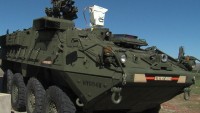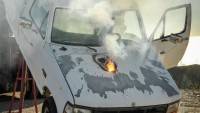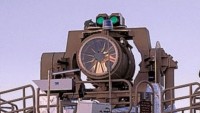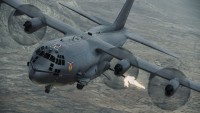China Making Slow Progress in Developing Battlefield Lasers
| Arthur Dominic Villasanta | | Dec 13, 2016 11:53 PM EST |
(Photo : CNTV) LAG II.
China's effort to develop high-energy battlefield lasers to shoot down enemy aircraft and missiles seems well behind that of the United States.
Since making a big publicity splash in Chinese state-owned media in 2015, not much has been revealed about Low Altitude Guard II (LAG II), being evaluated by the People's Liberation Army (PLA) to shoot down American aerial drones.
Like Us on Facebook
State-owned media first extensively covered the development of LAG II in late 2015. The weapon made its first public appearance in Sept. 2016 at the Africa Aerospace and Defense 2016 tradeshow in South Africa. What China's revealed about this weapon hasn't changed much in the course of a year, however.
China claims LAG-II is the most powerful laser weapon known to exist, apart from secret weapons in development elsewhere. LAG II, which fires a 30 kilowatt laser beam, was built by the Chinese Academy of Physics Engineering and Jiuyuan High Tech Equipment Corporation.
A road mobile weapon, LAG II is mounted on wheeled trailer towed by a truck. The trailer carries LAG II, which is enclosed in a protective turret when on the move, and its power system. Medium-sized trucks or 6x6 armored personnel carriers can be used to tow this weapon.
LAG II uses an electro-optical sensor to acquire and track targets autonomously before destroying them on command from its human operators inside a command vehicle. Its predecessor, LAG I, was a stationary laser weapon used mostly for field trials.
The electro-optical guidance system on LAG-II can also theoretically be used to shoot down larger aircraft, but a more advanced system will be required to destroy much larger weapons such as missiles or rockets.
State-owned media said LAG II can be upgraded with datalinks to allow it to engage high-speed targets like rocket artillery. Currently, the laser can only engage slower targets like small unmanned aerial vehicles and mini-drones at a maximum range of only 4 km.
China claims LAG II is comparable to the Laser Weapons System (LaWS) installed on the U.S. Navy warship, USS Ponce (AFSB(I)-15), an Austin-class amphibious transport dock. The Ponce is a testbed for the Navy's first shipborne laser with an output ranging from 15-50 kW used for shooting down aerial drones and engaging small enemy boats.
The U.S. Air Force will soon test lasers mounted aboard its aircraft while the U.S. Army has already tested powerful battlefield lasers. The army will soon test lasers with an output of 120 kW.
Tagschina, batlefield laser, ow Altitude Guard II, LAG II, 30 kilowatt laser beam, Laser Weapons System (LaWS), USS Ponce
©2015 Chinatopix All rights reserved. Do not reproduce without permission
EDITOR'S PICKS
-

Did the Trump administration just announce plans for a trade war with ‘hostile’ China and Russia?
-

US Senate passes Taiwan travel bill slammed by China
-

As Yan Sihong’s family grieves, here are other Chinese students who went missing abroad. Some have never been found
-

Beijing blasts Western critics who ‘smear China’ with the term sharp power
-

China Envoy Seeks to Defuse Tensions With U.S. as a Trade War Brews
-

Singapore's Deputy PM Provides Bitcoin Vote of Confidence Amid China's Blanket Bans
-

China warns investors over risks in overseas virtual currency trading
-

Chinese government most trustworthy: survey
-

Kashima Antlers On Course For Back-To-Back Titles
MOST POPULAR
LATEST NEWS
Zhou Yongkang: China's Former Security Chief Sentenced to Life in Prison

China's former Chief of the Ministry of Public Security, Zhou Yongkang, has been given a life sentence after he was found guilty of abusing his office, bribery and deliberately ... Full Article
TRENDING STORY

China Pork Prices Expected to Stabilize As The Supplies Recover

Elephone P9000 Smartphone is now on Sale on Amazon India

There's a Big Chance Cliffhangers Won't Still Be Resolved When Grey's Anatomy Season 13 Returns

Supreme Court Ruled on Samsung vs Apple Dispute for Patent Infringement

Microsoft Surface Pro 5 Rumors and Release Date: What is the Latest?














